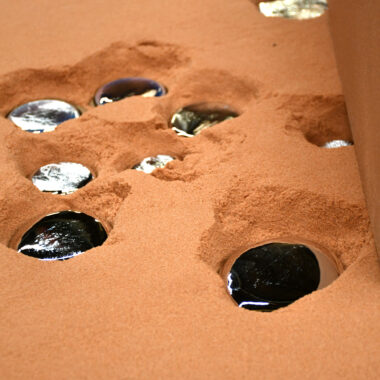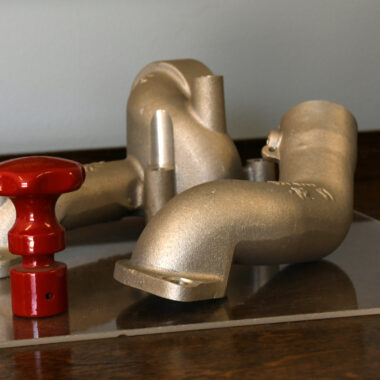Development Let Loose: Advancing Casting Aluminum Illinois
Development Let Loose: Advancing Casting Aluminum Illinois
Blog Article
Achieving Excellence in Light Weight Aluminum Casting: Essential Tips and Techniques
In the world of aluminum casting, high quality and accuracy are paramount (casting aluminum illinois). The process of changing liquified light weight aluminum into elaborate and long lasting parts calls for a meticulous approach at every stage. From very carefully picking the right materials to developing pouring methods and making sure thorough finishing touches, accomplishing excellence in aluminum casting demands a blend of proficiency and attention to detail. As specialists in the field aim to best their craft, grasping a collection of necessary pointers and methods comes to be vital. Allow's check out the crucial elements that can raise aluminum casting from good to extraordinary, setting the phase for unparalleled outcomes and unparalleled workmanship.

Products Option
Selecting the suitable materials is critical in making sure the success and top quality of your light weight aluminum casting projects. The choice of materials substantially impacts the final residential or commercial properties of the casted products, including strength, sturdiness, and general top quality. When picking products for light weight aluminum casting, it is important to think about aspects such as the type of aluminum alloy, the desired mechanical residential or commercial properties, and the casting method being used.
Light weight aluminum alloys are generally made use of in spreading because of their lightweight nature and excellent mechanical residential or commercial properties. The selection of the details alloy relies on the application demands, with options varying from high-strength alloys ideal for architectural components to corrosion-resistant alloys for aquatic settings. Comprehending the qualities of various light weight aluminum alloys is vital for choosing one of the most proper one for your project.
Moreover, the spreading approach utilized, whether it be sand spreading, die casting, or financial investment casting, additionally influences product choice. Each casting technique has its own needs in terms of product fluidity, thermal conductivity, and mold and mildew compatibility. By very carefully considering these elements, you can make sure that the materials picked are tailored to satisfy the specific requirements of your aluminum casting job.
Mold And Mildew Prep Work
In the world of aluminum casting, the thorough prep work of mold and mildews stands as a vital forerunner to the actual spreading procedure. Mold and mildew prep work includes a number of essential actions to guarantee the top quality and accuracy of the last cast product. It is critical to clean the mold completely to get rid of any kind of dirt, residue, or previous casting residues that might endanger the brand-new cast. This cleaning process assists preserve the stability of the mold and mildew and prevents defects in the final product.
Following, using an appropriate mold and mildew covering is important to assist in the release of the cast aluminum and improve the surface area coating of the component. The kind of finishing utilized will depend on factors such as the intricacy of the mold and mildew, the preferred surface finish, and the spreading product. Furthermore, appropriate venting and gating systems must be incorporated right into the mold and mildew style to permit the smooth flow of liquified aluminum and avoid the formation of air pockets or issues in the actors part.
Melting and Putting Strategies
To accomplish successful light weight aluminum spreading, grasping efficient melting and putting strategies is extremely important for making certain exact and top notch outcomes. The melting process is a crucial action in aluminum spreading, where the steel is heated to its fluid state. It is vital to monitor the temperature level carefully to stop getting too hot, which can result in inadequate casting high quality. Making use of induction heating systems or gas-fired crucible furnaces can supply precise temperature level control and reliable melting.
Once the light weight aluminum reaches the desired liquified state, correct pouring techniques have to be utilized to move the metal right into the molds. The rate and consistency of the pour are important consider attaining uniform dental filling of the mold and mildew tooth cavity and lowering the threat of defects like air entrapment or insufficient spreading. Gravity pouring, low-pressure spreading, or centrifugal spreading techniques can be used based on the details demands of the job.
Cooling and Solidification Control
Accomplishing specific control over the cooling and solidification procedure is important in aluminum spreading to preserve the stability and quality of the last casted items. Correct air conditioning and solidification control assistance stop issues such as porosity, hot splits, and shrinking that can compromise the mechanical properties of the casted light weight aluminum parts.
One crucial facet of air conditioning and solidification control is the style and placement of cools. Cools are metallic objects strategically placed in the mold to absorb warm quickly from specific areas of the spreading, promoting uniform solidification and decreasing the probability of defects. Additionally, managing the air conditioning price by changing the mold's product, layout, and the application of shielding finishings why not try here can influence the microstructure and mechanical properties of the final spreading.
Additionally, tracking and controling the cooling process via using thermocouples and computer simulations permit real-time adjustments to optimize air conditioning rates and solidification patterns. By executing these methods, shops can improve the top quality and uniformity of their aluminum spreadings, satisfying the rigorous demands of various markets.
Finishing and Quality Inspection
Appropriately executed ending up and high quality examination procedures are important in ensuring the general integrity and reliability of aluminum castings, constructing upon the meticulous air conditioning and solidification control methods employed throughout the casting procedure. Finishing methods such as grinding, sanding, and brightening assistance eliminate excess material, smooth rough surface areas, and improve the castings' final appearance. These processes not only improve the visual charm but likewise guarantee dimensional accuracy and performance.

Final Thought
To conclude, accomplishing quality in aluminum spreading requires cautious factor to consider of products selection, careful mold and mildew preparation, specific melting and pouring methods, reliable cooling and solidification control, along with thorough ending up and quality assessment procedures. By following these crucial suggestions and techniques, manufacturers can guarantee the manufacturing of high-quality my website aluminum spreadings that fulfill industry standards and client assumptions.
When picking products for aluminum casting, it is important to take into consideration factors such as the type of aluminum alloy, the preferred mechanical residential or commercial properties, and the spreading approach being made use of.
Moreover, the casting method utilized, whether it be sand spreading, pass away spreading, or financial investment spreading, also influences material selection.In the realm of aluminum spreading, the careful prep work of molds stands as a critical precursor to the real casting process. Gravity pouring, low-pressure casting, or centrifugal casting techniques can be made use of based on the details needs of the task.

Report this page